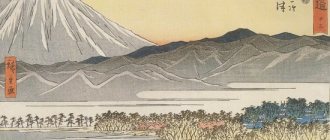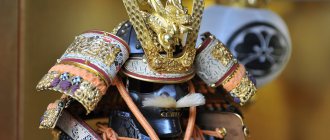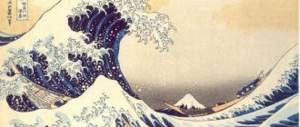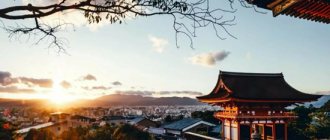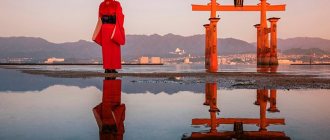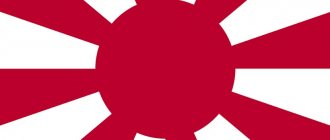The Jomon culture, at most, existed from the time of the first pottery (ca. 16,500 years ago) until the advent of flood rice farming (between 3000 and 2400 years ago). This is a common name for a number of cultures of the Japanese archipelago that began a sedentary lifestyle. The basis of their life was hunting, gathering, fishing, gardening, they used various animals and a variety of plants, created ceramics and tools from stone. The time of formation of such a culture in Japanese history is called the Jomon period.
The complex social structure of hunter-gatherer culture
During the Jomon period, polished stone tools were already used, and in this sense, this time can be considered Neolithic, but they did not engage in agriculture and cattle breeding, which distinguishes them from the Neolithic cultures of Europe and Western Asia. At the same time, people possessed sophisticated technology for making ceramic products, lived sedentary all year round, and sometimes there were large settlements of several dozen dwellings. Construction technology was also at a high level, allowing the construction of large structures with wooden pillars, the diameter of which could reach one meter, they cultivated chestnuts and lacquer wood, beans (soy and azuki), made lacquer and wickerwork, they had excellent craft technologies.
Reconstruction of a huge wooden building in the prefecture. Aomori (Courtesy of Sannai-Maruyama Historical Monument Center)
The Jomon people kept dogs, and not only used them as hunting dogs, but buried them after death. They had a multifaceted spiritual culture, as can be seen from cromlechs (circles of stones) and other large religious buildings, ceramic dogu figurines, ritual polished stone staffs, and burials and funerary goods indicate a complex social structure. Thus, the Jomon people are not just a people of hunters and gatherers, but should be perceived as a highly developed society in many aspects, taking into account their forms of activity, social structure and spiritual culture. There are very few cultures in the world that are so developed at the gathering stage. Despite the absence of agriculture and cattle breeding, the Jomon culture can be placed on a par with the prehistoric cultures of other countries where the Neolithic revolution took place, and in this sense, Japan is a unique country in its own way.
Cromlech in Ooyunonakado, Kazuno Prefecture. Akita (Courtesy of Kazuno Education Association)
Cromlech in the form of a sundial in Ooyunonakado, Kazuno Prefecture. Akita (Courtesy of Kazuno Education Association)
What is Jomon
The word “Jomon” itself consists of two characters in Japanese - “rope” and “pattern”. This term denotes a special type of ceramics, characteristic only of Japan, or, more correctly, the design of ceramics.
The ornaments on products from the Jomon era are pressed directly into unhardened clay. All objects were molded by hand - pottery did not yet exist in the Jomon period.
“Rope patterns” are the most characteristic, but not the only manifestation of culture during the Jomon period. What is characteristic is that in this era the Japanese were not yet not only Japanese, but even representatives of the Mongoloid race. They were engaged in gathering and hunting, did not know how to sow rice, and lived in primitive dugouts - under roofs made of leaves. In addition, archaeologists have established that dogs were already domesticated during the Jomon period.
As for the ceramics, its most characteristic feature (besides the unique design) is the bottom, which is uncharacteristic of clay vessels from other regions - it was not flat, but had a cone-shaped shape. Such vessels are much easier to sculpt, and when used, they were not placed, but buried in the ground. This indirectly indicates that the Japanese islands were inhabited during the Jomon period by people who did not use furniture.
Concepts of the cycle of life, death and rebirth in Jomon ceramics
The clay products used at that time are called Jomon pottery, which is what many people associate with the Jomon culture. The very name jomon, “rope pattern,” comes from the patterns made with cord marks on the ceramics of the Oomori shell middens in Tokyo - Edward Morse (1838-1925), who discovered and examined the shell middens, described the found ceramics as cord marked pottery, “ceramics with cord marks.” Jomon pottery varies greatly depending on the time and place of creation, and particularly varied is the pottery of Eastern Japan from the mid-Jōmon period, created about 5,000 years ago, when beautiful and elaborately decorated vessels were used in everyday life - “flaming” shapes, crown-shaped, with a spiral pattern etc. At the end of the Jomon period, about 3000 years ago, in the northeastern region of Tohoku, the so-called. Kamegaoka type ceramics are thin-walled high-quality ceramics; at this stage, simple cooking utensils and high-quality ritual vessels were made in different ways.
Crown-shaped vessel from the historical monument of Sasayama in Tokamachi Prefecture. Niigata National Treasure (Courtesy of the Tokamachi City Historical Museum)
Deep pot with a spiral pattern from the historical monument of Tsunagi in Morioka Prefecture. Iwate, Important Cultural Property (Courtesy of Morioka City Historical Museum)
Jomon pottery was used not only for cooking - sometimes babies who died shortly after birth were buried in the vessels. There are vessels depicting childbirth, where the mother's face is depicted at the rim, and on the body - the face of the baby at the moment of birth from the mother's womb, from which we can assume that the vessel was likened to a woman, and the baby was buried in it with the hope of his rebirth - Thus, it is likely that the Jomon culture had ideas about rebirth, the cycle of life and death.
Vessel depicting a birth scene from the historical site of Tsuganegosomae in Prefecture. Yamanashi (provided by the Hokuto City Education Committee)
Jomon era patterns
Over time, the bottom of Japanese dishes became flat, but the now famous Jomon ornament remained unchanged. The rope was twisted tightly and used to press patterns into the hardening clay. The craftsmen used ropes of different thicknesses, which made it possible to diversify the ornaments. The patterns on the same vessel could “look” in one direction, or they could look in the opposite direction. Scientists believe that the direction of the ornament was only a kind of “creativity” of the artist - these differences did not mean anything special.
Researchers from the Jomon period suggest that clay “sausages” were placed inside a wicker basket along the walls. Then the clay was compacted by hand, after which the product was knocked out of the mold, decorated with rope patterns and sent to the sun. Of course, ceramics were not covered with any glaze during the Jomon period. On some of the vessels discovered by archaeologists there were not only ornaments from ropes, but also imprints of shells and other objects, as well as drawings made by some kind of stack.
Later, the future Japanese began to actively practice all sorts of moldings on the outside of the vessel, depriving the product of symmetry. Such vessels can be perfectly used by artists as nature – they are extremely authentic.
Fertility prayers and dogu figurines
These ideas about the world in the Jomon culture are best shown by clay figurines of dogu. At first they mainly depicted women, and later figurines in the form of a pregnant woman just before giving birth became widespread. It is believed that they were used in magical rituals related to a woman’s inherent ability to give birth to life. Using the magic of life-giving power, they could be used not only to pray for the healing of wounds and diseases, but also for the fertility of the earth.
Dogu figurine depicting a pregnant woman from the historical site of Tanabatake in Prefecture. Nagano, National Treasure (Courtesy of the Tino Togariishi Archaeological Museum)
The Jomon people seem to have eaten almost any food that could be collected from nature, but they also had favorite foods that they preferred over others: chestnuts, horse chestnuts and acorns - from nut fruits, from animals - deer and wild boar, from fish - pagr (tai), sea pike perch (Suzuki) and salmon. They prepared the food they collected in different ways and stored it so that it could be used all year round. They did not live “one day at a time”, immediately eating what they collected on the same day, but processed food in such a way that it could be prepared throughout the year in accordance with the consumption plan, however, despite this, due to unfavorable weather conditions, they did not always managed to collect a sufficient amount of food in the vicinity of the settlement. The Jomon people made every effort to collect food, and also prayed to dogu figurines, which for them embodied the life-generating power, and asked for natural abundance.
LiveInternetLiveInternet
As a result of the defeat in World War II, the entire ideological morality built around the sacred figure of the emperor collapsed. Emperor Hirohito (Showa) publicly declared his human, not divine, nature. For the Japanese, this, of course, was a blow... in a way, their chosenness of God was lost. Then they began to be interested in archeology and look for something in which they would, again, be ahead of the rest. And they did find...
Stages of the Jomon period
1. Proto-Jomon (Earliest Jomon; So-ki) – 8-5 thousand years BC; 2. Early Jomon (Zen-ki) – 4 thousand years BC; 3. Middle Jomon (Tyu-ki) – 3 thousand years BC; 4. Late Jomon (Ko-ki) – 2 thousand years BC; 5. Final Jomon (Latest Jomon; Ban-ki) – first half of the first millennium BC.
... ceramics ... of the Jomon period (Paleolithic) ... this period means “mark of the rope” if translated literally... At the excavations, they began to find ceramic utensils decorated with a rope pattern, the so-called classical version, but vessels were also found on which the pattern was applied with bamboo sticks , or even with your fingers. Nevertheless, the cult accessories were even more distinguished by even greater sophistication - “snake” motifs and plastic images of animal heads “mounted” in the aureole.
Actually, one of the reasons for sedentism, nomadic tribes, was the production of ceramics... But this is not the point, until now, most Japanese scientists unanimously believe that the very first ceramics came from the proto-Japanese, although most archaeologists on the other side of Japan believe that it was very difficult to call the population of that time proto-Japanese... But, as far as I understand, this is an always open topic)))...
Here's a big preface to the main points
... clay figurines of dogu from 3 to 30 cm in height... little can be written about them, but even before I started reading the book “The History of Ancient Japan” A. Meshcheryakov and M. Grachev, in various searches for anything about Japan, I have already found bits and pieces of information about these dolls... actually... there are few descriptions about the purposes for which they were made, but the fact that they were a cult object was noted everywhere. Many of them were found in good condition, however, all of them were dolls without any body parts. This is where it gets interesting that it is now believed that these dolls were created to be destroyed. Naturally, we are talking about ritual ceremonies. It is assumed that the figurines were used in the ritual of treating sick or wounded people. And the part of the figurine that was supposed to heal the person was broken. There are also suggestions that dogu figurines served to communicate with supernatural forces of other worlds. Well, as rituals for healing, respectively, a female figurine was used for women, and a male figurine for men... but among these dolls there were also figures that could not be identified at all as any type of something existing))) In the end... all of this This is purely speculation and is not reliably known, I hope that for now we don’t know what these dogu figurines were used for.
Yayoi - period from 500 BC. to 300 AD (Bronze-Iron Age) we can talk about a lot here, about the emergence of new tools, about the construction of dwellings, etc., but I am still interested and have always been interested in cult accessories. My wonderful book shows burial goods: bronze funeral broad-bladed swords and bronze bells - dotaku . It is very difficult to find a variety of photographs, because... Currently, about 500 of these bells have been found. Their sizes range from 20 to 130 cm. Moreover, at first the dotaku was a musical instrument, and then received a new life - becoming a cult instrument. An example is the Korean Peninsula, where the same bells were used. Many bells are decorated with images of animals and hunting scenes. Again, their exact purpose is not known, but there is an assumption that they were associated with the cult of agriculture.
The conditions of the finds suggest that, in all likelihood, both swords and bells were in normal times kept buried in the ground and were presented to the community only during some kind of ritual event. This model of behavior is part of the religious complex that came to be called Shintoism: temple shrine (shintai) m.b. presented to believers only during the performance of a ritual action; in normal times, she rests behind the tightly closed doors of a Shinto shrine. There are also temples where shintai cannot be shown at all.
“History of Ancient Japan” A. Meshcheryakov and M. Grachev
Another item of cult significance were bronze mirrors. They are found in burials and it is believed that their purpose was to light the way for the buried person in the afterlife, because they were considered a substitute for the sun. In the late Yayoi period, mirrors also ceased to serve only as funeral equipment, but also began to be used in cults designed to ensure the well-being of the living. Unfortunately, I couldn’t find any photos (((
But in any case, for now I’m finishing this post... I was interested in creating it, I hope that my IFs will also be interesting to someone)))
“History of Ancient Japan” A. Meshcheryakov and M. Grachev
as well as photos from Yandex
and favorite site: https://leit.ru/
Series of messages “History and Holidays”:
Part 1 - April 29: Showa Day in Japan Part 2 - Panorama of Kyoto 16th century. Part 3 - Russian samurai. Part 4 - Cult accessories of other Japan. The Jomon and Yayoi periods. Part 5 - Mirrors in Japan have always had strong ties to Shintoism Part 6 - Shintoism and Buddhism in Japan. A little history. ... Part 9 - Japan 1865 Part 10 - Magatama - Japanese amulet and talisman Part 11 - Remains of 7th century buildings found in Japan
Connections between settlements
Valuable natural raw materials such as jade and amber, obsidian, and bitumen could only be mined in certain places, and the Jomon people transported them to distant places for trade exchange. In addition, they carried stored dried shellfish and dried fish, salt and other products to the settlements of the mainland, exchanging them there for other things. The items of exchange were also tools - stone arrowheads, axes made of polished stone, jewelry - mother-of-pearl bracelets and ceramic earrings, as well as lacquerware and much more. It is believed that such an exchange was made possible due to the existence of a wide, efficient trading network between settlements.
Jade jewelry from the historical site of Sakai-A Prefecture. Toyama (Courtesy of Toyama Prefecture Fossil Cultural Property Center)
Thus, the trade network between settlements helped the Jomon society, and to renew and maintain it, exogamous marriages were practiced, that is, marriages between representatives of different communities who became intermediaries between two different communities. The Jomon people entered into such marriages with representatives of nearby and distant communities and settlements, which allowed them to exchange material and human resources and people. In some regions, social stratification also appears, as in southern Hokkaido, where jade, amber, lacquer jewelry and other signs of status are concentrated in a certain family or individual.
Lacquer decorations at the historical site of Hokkaido-Karimba (burial 119) (courtesy of the Eniwa Museum)
What else is known about the Jomon period?
The Jomon period is one of the most controversial in the history of Japan, because no written sources have survived, and scientists literally form their ideas about the life of people 12.5 thousand years ago from fragments. Archeology became one of the main ways for the Japanese to understand the history of the people at the end of the twentieth century.
Items from the Jomon era are too decorative to be used in everyday life. However, apparently, it was during that period of Japanese history that the Japanese passion for decorating and transforming the appearance of objects was formed. This trend has become iconic for all Japanese art.
About 12% of the modern Japanese genome comes from the Jomon people
On the territory of the modern Japanese archipelago, people (Homo sapiens) appeared in the Paleolithic, about 38,000 years ago. After that, Japan was settled several times - along the Northern Route, through Primorye, Sakhalin and Hokkaido, along the Western Route - from mainland China through the Korean Peninsula and northern Kyushu, and also along the Southern Route - through the Nansei Islands.
The Jomon people are mainly descendants of people who came here in the Paleolithic, but it has been established that the genome of modern Japanese is 12% derived from the genome of the Jomon people. Research in biological anthropology also suggests that these people are one of the direct ancestors of modern Japanese.
Moreover, the methods developed by the Jomon people for collecting food, using fauna and flora, and handicraft technologies continued to exist long after irrigation flood rice crops arrived from the mainland about 3,000 years ago and the Yayoi period began. Some of Jomon technology is still used in traditional culture today. Thus, the Jomon culture can be said to be at the origins of Japanese culture, and anthropologically and culturally, the Jomon people help to better understand the origins of modern Japanese.
Banner photo: “Flaming” and crown-shaped vessels from the historical site of Sasayama in Tokamachi Prefecture. Niigata National Treasure (Courtesy of the Tokamachi City Historical Museum)
Hosono Hitomi: Jomon in Contemporary Art
Vessels from the Jomon era are an endless source of inspiration for modern artists. Among them is the Japanese artist Hosono Hitomi, who lives in London but was born in Gifu Prefecture.
Hosono Hitomi, unlike the ancestors of modern Japanese, uses a potter's wheel to create a vessel, and only then decorates the product, including techniques popular during the Jomon period. Hitomi usually creates using her fingers or toothpicks. It turns out great.
